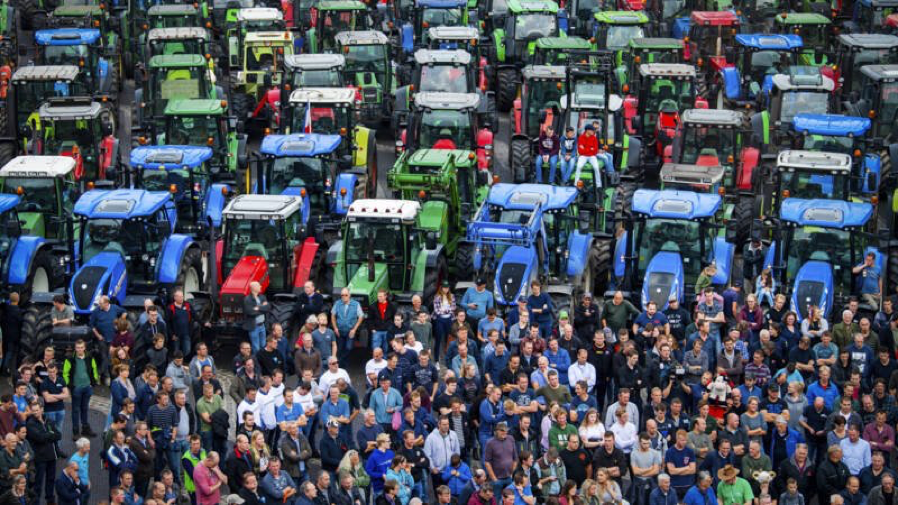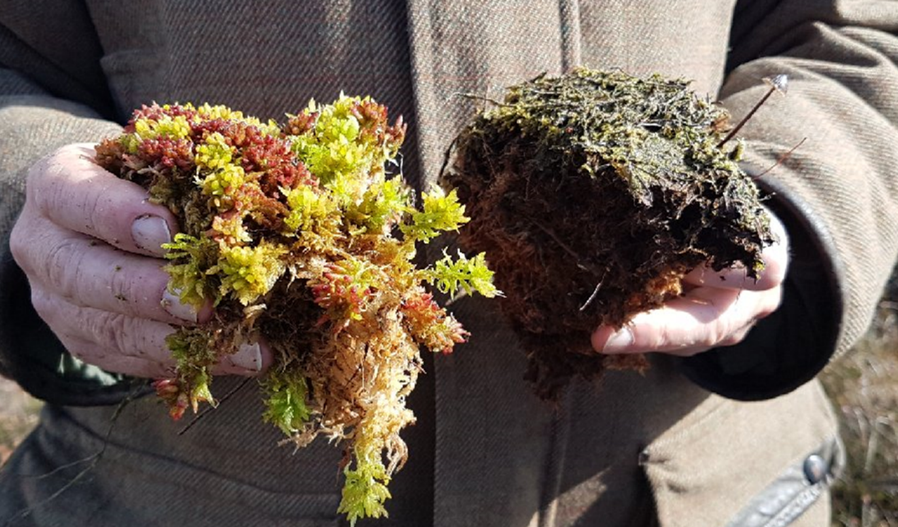“It was the best of times, it was the worst of times, it was the age of wisdom, it was the age of foolishness”… But in this new rendition of Dickens, the cities are exchanged for Brussels and Belfast, with major action on the way in the fields surrounding The Hague.
For this week, tractors have been busy blocking Dutch motorways on their way to the cities. Farmers are up in arms and the revolution is underway. Madame le guillotine rests quietly, but this time it is the nitrogen – or in Dutch Stikstof, which literally means ‘suffocating material’ – that is being used to choke the honest citizens.

The reason for the farmers’ revolt? They have been told that The Netherlands Programmatic Approach to Nitrogen does not give sufficient protection to nature. New rules mean no permissions for new farms, the threat of decreasing animal numbers across the country, and, for good measure, lower speed limits on motorways, reducing from 130 to 120 km per hour. The last action is aimed to emphasise that the nitrogen problem is not just the responsibility of farmers, but that emissions of nitrogen oxides (NOx) from traffic and other sources are also contributing to the nitrogen problem.
For the farmers, it is ammonia (NH3) that is enemy number one. It is a form of nitrogen pollution that evaporates into the air from urine in animal manure and from chemical fertilizers. Bizarrely, it’s exactly the same stuff that gives the whiff to smelling salts – so popular in the 18thcentury as a product made from distilled rags and bones.
As an air pollutant, ammonia contributes for the formation of fine particulate matter (PM2.5) posing a major threat to human health. But in this tale, it is the ecosystems that call the shots. High concentrations of ammonia, and its deposition combined with other nitrogen compounds, are threatening the biodiversity of natural habitats, where heathlands become grasslands and precious plants and flowers are lost.
In a recent Dutch court ruling, it has been declared that enough is enough and that nature must be protected. The result is that everyone is talking about nitrogen in The Netherlands just now, even the royal family, who are rather wisely keeping their heads. All the news I have seen has been in Dutch, and the world might be forgiven for not noticing their national revolution.
But this would be a big mistake, because the nitrogen problem is a European and global challenge of huge proportions. The marching Dutch tractor is actually the result of agreements in Brussels, while nitrogen pollution is everywhere and more or less invisible across multiple issues. Not only does nitrogen contribute to air pollution, but also nitrate water pollution, as well as emissions of nitrous oxide (N2O), laughing gas – a greenhouse gas 300 times more powerful than CO2.

It is time for the other tractor. This one is in a field outside Belfast. While the Brexit debate rages about the future of Northern Ireland – in or out of Europe or halfway in the middle – the nitrogen question is not being forgotten. I have made several trips to Northern Ireland in the last years to assess the impact of ammonia on their peatbogs and have come round to calling this ‘Ammonia Land’. With high populations of cattle and a growing poultry sector, ammonia concentrations are well above sustainable levels at many locations. Irish peatbogs are suffering from ammonia pollution, with dying heather, mosses and lichens. Sphagnum moss is particularly vulnerable, as shown in the photograph. Planning permission for new farms has also ground to a halt, as the Northern Ireland government reviews whether it is doing enough to protect ecosystems.
Somehow a new deal needs to be made with the farmers, but it is not yet there. Walking over Ballynahone Bog with Ivor Ferguson, President of the Ulster Farmers Union, it was easy for me to show him damaged vegetation. My job as a scientist was simply to convince him about the biological reality. The economic deal-making must be for others. For example, would the government give grants to help farmers reduce ammonia emissions?
But we cannot forget Brexit in all this. For what the media seems to have missed so far is that the two tractors are connected. The Dutch court did not come up with their decision alone, for it fell directly out of a judgement last year by the European Court of Justice, supported by a prior opinion by Advocate General Juliane Kokott. At heart is the interpretation of the EU Habitats Directive adopted in 1992, which applies to all EU Member States, currently including the United Kingdom of Great Britain and Northern Ireland.
The Habitats Directive can be said to be a bit like a sleeping dragon. While it sleeps, life is easy. But watch out if it wakes up! For embedded in the directive is a firm and solid duty to protect nature. Not only that, but according to the EU directive, development can only be permitted if it can be shown with scientific certainty that there would be no adverse effect on EU nature sites that have been designated by member states.
So if a farmer stocks extra animals in an old barn, then in many EU countries he needs no permission. But if he wants to build a new barn to expand, the dragon may wake, so that his application to authorities has to be tested under the country’s Habitats Regulations. Where ammonia is above safe limits, permission must normally be refused. The Dutch programmatic approach tried to fix this with a complex national accounting system… but in the end the European Court indicated that the Dutch system did not provide sufficient protection to nature.
There are several salutary messages from this Tale of Two Tractors. The first is that the current fight in the Netherlands actually applies across 70% of the EU area and 60% of the UK, where nitrogen deposition exceeds safe levels. If the UK, or for that matter Northern Ireland, wishes to match or exceed EU environmental standards, then this issue is not going away. And it is just the same with the laughing gas and water pollution. If we want to meet ambitious climate goals and water standards, then the world will need to get serious about nitrogen.
It is for this reason that with 196 other scientists from 44 countries, I have this week written to António Guterres, Secretary General of the United Nations, calling for global action to address the nitrogen challenge. In doing so, we highlight that this is not just a problem, but also an opportunity to stimulate innovation in a nitrogen circular economy, where a goal to ‘halve nitrogen waste’ from all sources globally would offer an annual resource saving worth $100 billion.
Letters are easy enough, but as scientists we also have to roll up our sleeves and work with governments, which is exactly what we are doing in the International Nitrogen Management System. Under the leadership of H.E. President Sirisena of Sri Lanka, we are meeting this week with environment ministers in Colombo ahead of United Nations day to launch a first ever UN campaign on Sustainable Nitrogen Management.
As yet, it is not clear which will have the biggest impact, the simple letter to Mr Guterres or the political negotiation to agree a Colombo Declaration. But, from an awareness perspective, my own bet is on the nitrogen song, which Grammy® winner Ricky Kej premiered in Colombo this week. For it brings hearts together for the big idea – that nitrogen is something the world has forgotten and now needs to find again.
Guest blog by: Prof. Mark Sutton is an international expert on nitrogen based in the UK and Director of UNEP’s International Nitrogen Management System. The article reflects the author’s own expert view.